The dreaded inverse taper problem.
5 posters
Page 2 of 2
Page 2 of 2 •  1, 2
1, 2
 The Dreaded Inverse Taper Problem
The Dreaded Inverse Taper Problem
Hrllo Iris. Any species that calouses well like Elm, Maple etc. In the winter, place a thick wire around the trunk and remember to protect the bark with split hosepipe. this wire needs to be fairly tight to stop the tree from splitting in two. Remove the soil, invert the tree and saw or carefully split up the trunk. Open up the trunk with a stone or wooden wedge. Lime sulphur will keep most disease at bay and You can fill the gap with wood filler or something similar. A couple of years unchecked growth should help the wound on its way.
Guest- Guest
 The Dreaded Inverse Taper Problem
The Dreaded Inverse Taper Problem
Nothing wrong with this Russ  , bags of potential. Two ways to deal with inverse taper for your tree are. One. Plant it back in the ground and keep the uppermost branches cut back, whist letting all the branches below the bulge grow for a couple of years. It won't grow too much in the first year as it has to make new root but the second year it should romp away.The enlarging of those low branches will put on plenty of wood where it needs it. Two. Air layer the tree at its fattest point. Remove a ring of bark an inch or so wide with a very sharp knife. Make sure you cut back through the cambium, back to the wood. Cover the wound in spagnum moss, or compost, making sure the top level is well above the top cut. If you perform this as the buds swell, I see no reson why you can't saw off your new tree in the Autumn. Rotate the tree throughout the summer to get an even spread of roots.
, bags of potential. Two ways to deal with inverse taper for your tree are. One. Plant it back in the ground and keep the uppermost branches cut back, whist letting all the branches below the bulge grow for a couple of years. It won't grow too much in the first year as it has to make new root but the second year it should romp away.The enlarging of those low branches will put on plenty of wood where it needs it. Two. Air layer the tree at its fattest point. Remove a ring of bark an inch or so wide with a very sharp knife. Make sure you cut back through the cambium, back to the wood. Cover the wound in spagnum moss, or compost, making sure the top level is well above the top cut. If you perform this as the buds swell, I see no reson why you can't saw off your new tree in the Autumn. Rotate the tree throughout the summer to get an even spread of roots.
Regards Frank
Regards Frank
Guest- Guest
 Re: The dreaded inverse taper problem.
Re: The dreaded inverse taper problem.
Does it have to be winter? The one I'm thinking of is Fukien tea, so it would have to be done during active growth. Would I kill it?will baddeley wrote:In the winter, place a thick wire around the trunk and remember to protect the bark with split hosepipe. this wire needs to be fairly tight to stop the tree from splitting in two. Remove the soil, invert the tree and saw or carefully split up the trunk. Open up the trunk with a stone or wooden wedge. Lime sulphur will keep most disease at bay and You can fill the gap with wood filler or something similar. A couple of years unchecked growth should help the wound on its way.
Iris
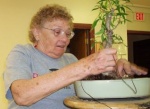
bonsaisr- Member
 Re: The dreaded inverse taper problem.
Re: The dreaded inverse taper problem.
Not sure about Fukien tea. By winter, I mean the dormant period(i presume they have one).What is the Fukien tea like with healing and callousing?bonsaisr wrote:Does it have to be winter? The one I'm thinking of is Fukien tea, so it would have to be done during active growth. Would I kill it?will baddeley wrote:In the winter, place a thick wire around the trunk and remember to protect the bark with split hosepipe. this wire needs to be fairly tight to stop the tree from splitting in two. Remove the soil, invert the tree and saw or carefully split up the trunk. Open up the trunk with a stone or wooden wedge. Lime sulphur will keep most disease at bay and You can fill the gap with wood filler or something similar. A couple of years unchecked growth should help the wound on its way.
Iris
Guest- Guest
 Re: The dreaded inverse taper problem.
Re: The dreaded inverse taper problem.
Thanks for the feedback Will and I agree with the idea of planting it in the ground and allowing the lower branches full growth, Though I’m a little concerned that the envisaged trunk thickening would be a little one sided. Again I agree with the idea of air layering the trunk at it’s widest point, But that will mean I lose three- four inches in height and I’m only five foot seven now!  No seriously- great suggestions you have given but what of the possibility of splitting the trunk and keeping the present height? Thanks must go to Iris for this idea.
No seriously- great suggestions you have given but what of the possibility of splitting the trunk and keeping the present height? Thanks must go to Iris for this idea. 
On a side note, I have noticed that the tree has a more textured bark on the current leader and yet lower down the trunk the bark is less textured. Anyone know why?
Regards Fuzzy
 No seriously- great suggestions you have given but what of the possibility of splitting the trunk and keeping the present height? Thanks must go to Iris for this idea.
No seriously- great suggestions you have given but what of the possibility of splitting the trunk and keeping the present height? Thanks must go to Iris for this idea. On a side note, I have noticed that the tree has a more textured bark on the current leader and yet lower down the trunk the bark is less textured. Anyone know why?
Regards Fuzzy

Fuzzy- Member
 Re: The dreaded inverse taper problem.
Re: The dreaded inverse taper problem.
[quote="Fuzzy"] No seriously- great suggestions you have given but what of the possibility of splitting the trunk and keeping the present height? Thanks must go to Iris for this idea.  Or Frank
Or Frank 

On a side note, I have noticed that the tree has a more textured bark on the current leader and yet lower down the trunk the bark is less textured. Anyone know why?
The bark at the top, may have been formed with the sudden and prolific growth of the leader.
On a side note, I have noticed that the tree has a more textured bark on the current leader and yet lower down the trunk the bark is less textured. Anyone know why?
The bark at the top, may have been formed with the sudden and prolific growth of the leader.
Guest- Guest
 Re: The dreaded inverse taper problem.
Re: The dreaded inverse taper problem.
Fukien tea, Ehretia microphylla (often misnamed Carmona), is a tropical & has no dormant period. It heals pretty well, but doesn't produce much callus. Old pruning scars are healthy, but not closing over. May not be a good candidate for this treatment.will baddeley wrote:By winter, I mean the dormant period(i presume they have one).What is the Fukien tea like with healing and callousing?
I tried wrapping the lower trunk on the above tree with wet sphagnum moss, but after a few days it started dropping leaves, so I took the stuff off.
I have found the most common cause of inverse taper in nursery stock is when ignorant careless workers repot seedlings or rooted cuttings an inch deeper than they grew in the nursery bed. It also occurs in those bundled seedlings for group plantings, where the lower part of the trunk is actually part of the taproot. Caveat emptor.
Iris

bonsaisr- Member
 Re: The dreaded inverse taper problem.
Re: The dreaded inverse taper problem.
Why not inverse taper?
Well, in nature you will see old trees with inverse taper, but the overall image is not always attractive. I believe the taper in a tree shows its age - a young tree would have a more straight trunk, while a mature tree will have fattened up an has a nice taper. We look for taper in bonsai because it greatly contributes to the image of an old tree, exactly what we are seeking.
However, as always the rule has its exceptions...
Some of the local trees I admire the most have inverse taper in maturity. Actually, the more extreme the inverse taper they have, the more awesome the trees become. These are pot bellied trees of the Malvaceae (former Bombacaceae) family, in the genera Ceiba, Pseudobombax and Cavanillesia. These trees are relatives of the African baobabs. They start out slim, but become obese in maturity. Below are some examples:
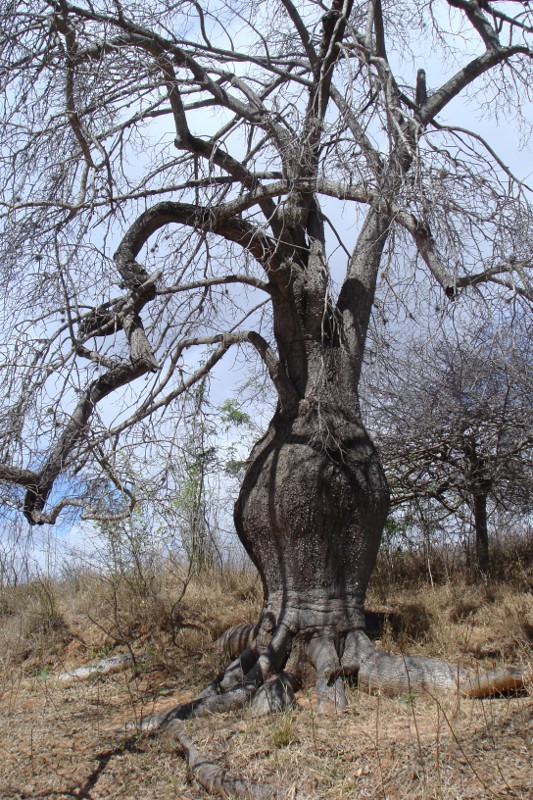
The tree above is Ceiba glaziovii, an elephantine specimen; below is me next to it for scale:
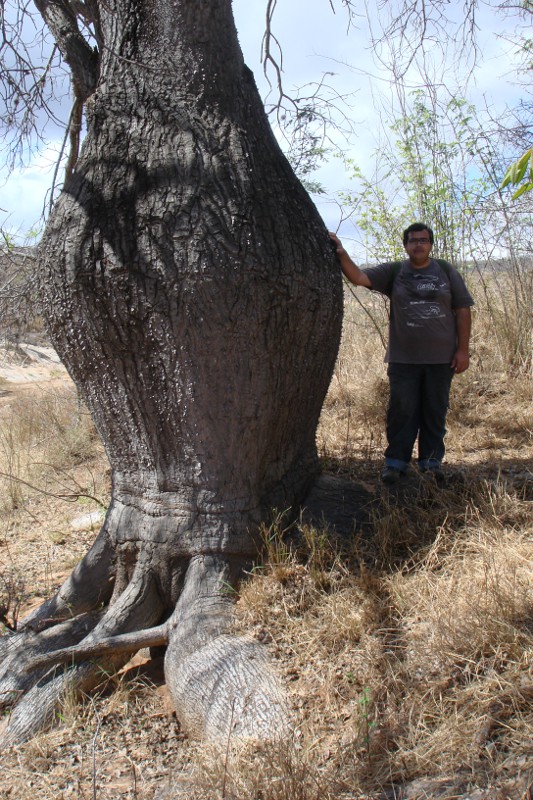
and below a shot of this tree in its surroundings; the other big trees are specimens of Cavanillesia arborea, the Brazilian bottle-tree equivalent of some of the baobab species from Africa;
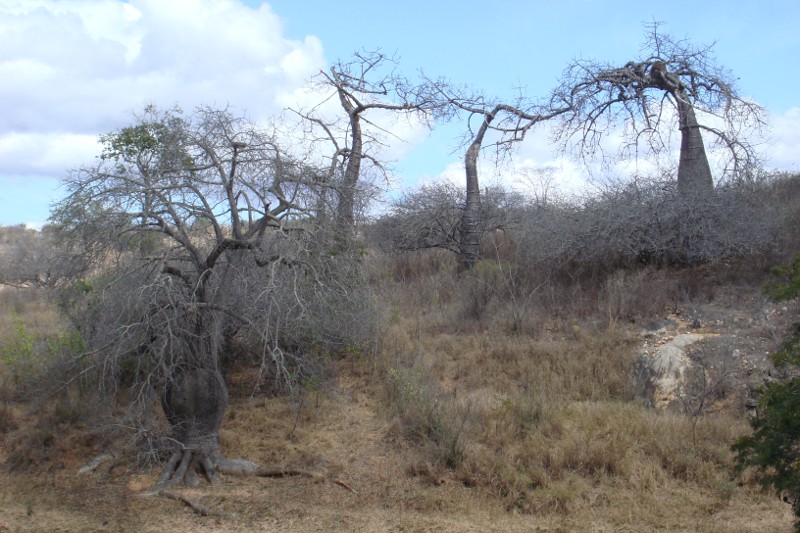
Another Ceiba species, this one is Ceiba rubriflora, a recently described species:
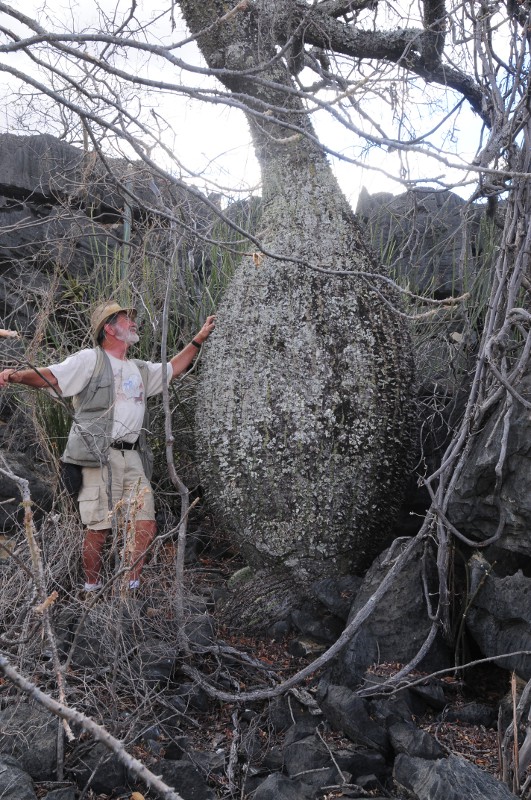
And a young Ceiba pubiflora - this species can get as massive and obese as C. glaziovii, perhaps just a bit taller:

An old Ceiba pubiflora:
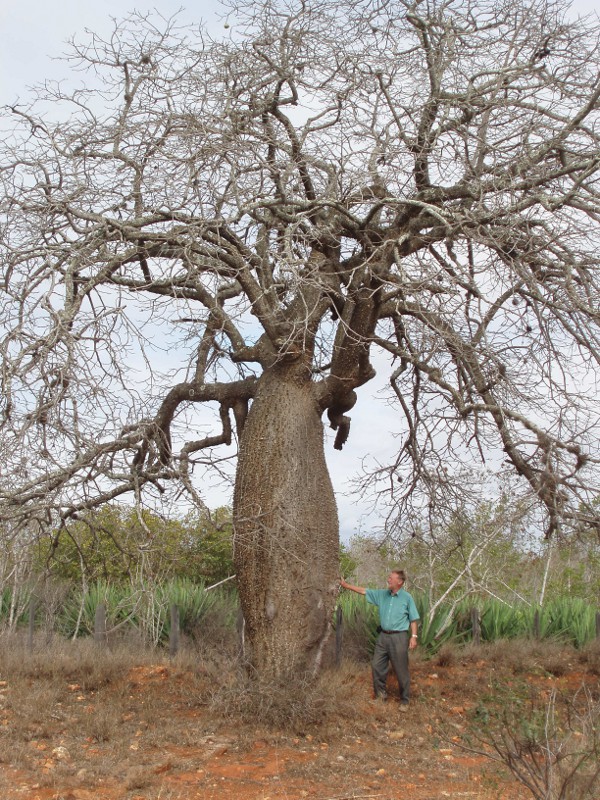
Well, I guess these images make my point - inverse taper is an inherent quality of some tree species in nature. These trees might seem odd for you guys living in temperate countries, but their shapes are quite normal for me. I live in the region where this trees grow, and the vegetation around here is mostly a dry semiarid scrubland. These obese trees are often the biggest and most majestic trees in their environment. I just love their shapes, and I always stand in awe, admiring the shape and size of a big specimen when I come across it in my trips to the countryside. I would love to capture the images of these trees in a bonsai form, even if not using the actual pot-bellied tree species as the material. I have never seem a bonsai with a shape even remotely similar to the one these trees have. I am new to bonsai and I do not have refined trees yet in my collection, but some of the plants I have I am trying to shape in the pot-bellied style of these trees. What about them for inverse taper?
Cheers,
Marlon Machado.
Bahia, Brazil.
Well, in nature you will see old trees with inverse taper, but the overall image is not always attractive. I believe the taper in a tree shows its age - a young tree would have a more straight trunk, while a mature tree will have fattened up an has a nice taper. We look for taper in bonsai because it greatly contributes to the image of an old tree, exactly what we are seeking.
However, as always the rule has its exceptions...
Some of the local trees I admire the most have inverse taper in maturity. Actually, the more extreme the inverse taper they have, the more awesome the trees become. These are pot bellied trees of the Malvaceae (former Bombacaceae) family, in the genera Ceiba, Pseudobombax and Cavanillesia. These trees are relatives of the African baobabs. They start out slim, but become obese in maturity. Below are some examples:

The tree above is Ceiba glaziovii, an elephantine specimen; below is me next to it for scale:

and below a shot of this tree in its surroundings; the other big trees are specimens of Cavanillesia arborea, the Brazilian bottle-tree equivalent of some of the baobab species from Africa;

Another Ceiba species, this one is Ceiba rubriflora, a recently described species:

And a young Ceiba pubiflora - this species can get as massive and obese as C. glaziovii, perhaps just a bit taller:

An old Ceiba pubiflora:

Well, I guess these images make my point - inverse taper is an inherent quality of some tree species in nature. These trees might seem odd for you guys living in temperate countries, but their shapes are quite normal for me. I live in the region where this trees grow, and the vegetation around here is mostly a dry semiarid scrubland. These obese trees are often the biggest and most majestic trees in their environment. I just love their shapes, and I always stand in awe, admiring the shape and size of a big specimen when I come across it in my trips to the countryside. I would love to capture the images of these trees in a bonsai form, even if not using the actual pot-bellied tree species as the material. I have never seem a bonsai with a shape even remotely similar to the one these trees have. I am new to bonsai and I do not have refined trees yet in my collection, but some of the plants I have I am trying to shape in the pot-bellied style of these trees. What about them for inverse taper?
Cheers,
Marlon Machado.
Bahia, Brazil.
Marlon Machado- Member
 Re: The dreaded inverse taper problem.
Re: The dreaded inverse taper problem.
Wow! Thanks Marlon for posting these images they are fascinating to look at. I also like the pot bellied name you give them. What really surprises me is that they are to my eye at least aesthetically pleasing as the pot belly acts as a focal point.
Do you know how the inverse taper is formed? Is it genetic or environmental?
Wonderful images to inspire a brand new form of bonsai me thinks!…..The Pot belly style perhaps?
Thanks once again for posting.
Do you know how the inverse taper is formed? Is it genetic or environmental?
Wonderful images to inspire a brand new form of bonsai me thinks!…..The Pot belly style perhaps?
Thanks once again for posting.

Fuzzy- Member
 Re: The dreaded inverse taper problem.
Re: The dreaded inverse taper problem.
Hi Eric,
The shape of these trees is genetic, and an adaptation to life in dry areas - the wood of the trunk is very light, soft and spongy, and it stores water and nutrients for the plant to endure the long dry season. When a tree dies, the moisture-rich wood rots surprisingly quick, and in no time the tree disappears completely from the landscape.
Yes, this tree form could very well become a new bonsai style - the pot belly can become an outstanding focal point. The trouble is finding the right sort of material to mimic it! Ceiba species are no good - in spite of being easy to grow, they are a pain to train - cuts do not heal very well unless they are rather small, the branches are rather stiff and prone to break, being maleable only when quite young; the plants do no not grow a twig structure - branches are always thick and stiff. Besides, the palmate leaves are large and nearly impossible to reduce much in size! Nebari is also a problem to develop, as young plants have a tendency to grow thick tuberous roots. And young seedlings have ordinary-looking, thin trunks - obesity only comes with age in these plants.
Fortunately there are other options of suitable material - many Commiphora and Bursera species (from Burseraceae family) develop swollen trunks as young plants if one prunes the plants judiciously, and their branches are easier to shape and refine.
Cheers,
Marlon Machado
Bahia, Brazil.
The shape of these trees is genetic, and an adaptation to life in dry areas - the wood of the trunk is very light, soft and spongy, and it stores water and nutrients for the plant to endure the long dry season. When a tree dies, the moisture-rich wood rots surprisingly quick, and in no time the tree disappears completely from the landscape.
Yes, this tree form could very well become a new bonsai style - the pot belly can become an outstanding focal point. The trouble is finding the right sort of material to mimic it! Ceiba species are no good - in spite of being easy to grow, they are a pain to train - cuts do not heal very well unless they are rather small, the branches are rather stiff and prone to break, being maleable only when quite young; the plants do no not grow a twig structure - branches are always thick and stiff. Besides, the palmate leaves are large and nearly impossible to reduce much in size! Nebari is also a problem to develop, as young plants have a tendency to grow thick tuberous roots. And young seedlings have ordinary-looking, thin trunks - obesity only comes with age in these plants.
Fortunately there are other options of suitable material - many Commiphora and Bursera species (from Burseraceae family) develop swollen trunks as young plants if one prunes the plants judiciously, and their branches are easier to shape and refine.
Cheers,
Marlon Machado
Bahia, Brazil.
Marlon Machado- Member
Page 2 of 2 •  1, 2
1, 2
 Similar topics
Similar topics» Inverse Taper.
» informal broom/oak style = inverse taper
» Roots as trunk
» A way to develope, or maintain taper...
» Reverse Taper concern?
» informal broom/oak style = inverse taper
» Roots as trunk
» A way to develope, or maintain taper...
» Reverse Taper concern?
Page 2 of 2
Permissions in this forum:
You cannot reply to topics in this forum










